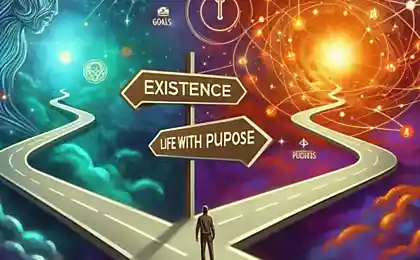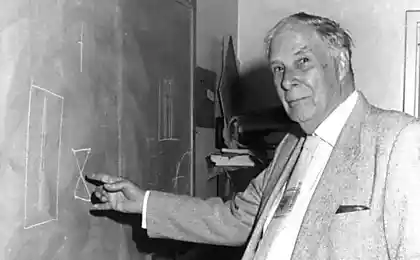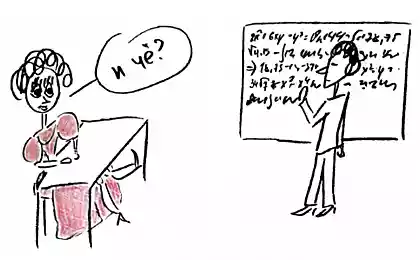179
Success Algorithm: How to Apply an Engineering Approach to Life's Tasks

When it comes to long-term goals—whether professional careers, education, health, or personal projects—we often rely on motivational slogans, abstract strategies like “believe in yourself” and “do your best.” However, as reality shows, this approach does not always yield a structured result, and under the onslaught of daily responsibilities and stress, we lose focus. Meanwhile, in the field of technology and engineering, techniques have long been honed to break complex tasks into clear stages, manage risks and resource intensity, and achieve predictable results.
In this article, we will talk about how to adopt “engineering thinking” and transfer it to real life. After all, if we think of our goals as “projects” with specific metrics and steps, it is easier not only to plan, but also to implement ideas. This approach helps maintain mental clarity, saves energy and reduces stress levels. The material is intended for a wide adult audience, including those who are only vaguely aware of the world of IT and engineering, and those who are looking for a more systematic method of personal growth or the implementation of ambitious ideas.
Main part
1. Project Thinking: What inspires you?
In the engineering environment (both in IT and in other industries), the so-called “project approach” is adopted: the task is formulated as a goal with specific criteria for success, and the entire process is divided into stages: planning, design, implementation, testing, etc. Why not use the same principle in your life?
- Example: If you want to master a new profession, you can determine the terms, “specializations” (skills to be developed), resources (time, money, courses) and “acceptance” (the final criteria: passing the exam, getting a job, etc.).
- Advantage: Breaking down into stages gives you an idea of what to do now and what indicators will indicate progress.
2. Requirements for the project: formulate tasks clearly
In engineering, there is the concept of “system requirements”: before developing a product, describe what it must be able to do. Similarly in life, if your goal is blurred (“I want happiness”), it’s hard to achieve. I want to improve my work-life balance so that I have two free evenings a week for my family.
- Formulate SMART goals: Specific, Measurable, Achievable, Relevant, Time-bound.
- What does it mean? clarity. You know where you are going and how to know you are coming.

3. Create a “solution architecture”
In IT and engineering, after collecting the requirements, specialists move on to the design of the system - the choice of architecture, the definition of the structure and interrelations of components. It is also possible to approach life tasks: to identify key directions.
- Example: If you want to improve your health (lose weight, strengthen endurance, normalize sleep), “architecture” can include nutrition, exercise, sleep patterns, and stress control. Each component has its own set of methods.
- Importance: Understand that each part of the system affects others. For example, if you do not establish sleep, it will be difficult to follow a diet and exercise regimen.
4. Break it down into iterations and "sprints"
One of the popular techniques in engineering projects - Agile, Scrum, Kanban, etc. - involves working in short cycles ("sprints"). Instead of trying to achieve a global goal at once, you set interim goals for a week or two. At the end of each cycle – evaluation of the result, adjustment of plans.
- In practice: “In the next two weeks, I want to make a jogging habit every morning. Then I will analyze what succeeded, what failed, and move on to the next stage.
- Advantage: Iterative model allows you to quickly adapt to new circumstances and maintain motivation, regularly noting progress.
5. Use "prototyping" and "MVP"
In IT, there is the concept of a “minimum viable product” (MVP) when a “lightweight version” of a solution is created to test hypotheses. In personal projects, this can mean “trying to the minimum” before investing all the resources.
- Example: You want to move to another country. Instead of leaving immediately and leaving forever, you can take a vacation or freelancing for a while and live there for a month, testing your hypothesis.
- Result: You'll know faster how real the idea is and if you need that change, and if anything, you'll go back to your current business with minimal losses.

6. Set clear metrics and monitor progress
A key element of the engineering approach is measurability. There’s no point in saying “I want more free time” if you don’t know how to measure it. Or “I want to improve my negotiation skills” without deciding how you fix the change.
- Approach: Choose specific metrics: the number of completed tasks, time allocated to the family, rating from colleagues, health (on a 10-point scale). Keep regular records.
- Benefits: Understanding the dynamics motivates, and if there is no progress, you can make adjustments in time.
7. Test, analyze and refactor
In engineering, refactoring is the process of improving code without changing functionality. Similarly in life: periodically “review” your actions, discard unnecessary, improve methods. Let’s say you’re trying your morning jogs – if it turns out you’re having a hard time getting up, maybe you should move the class to lunch or evening. Or if you've set a plan that's too rigid, cut it down to a more realistic one.
- Iterative cycle: “I tried” → “I assessed the result” → “I made improvements” → “I continue”.
- Revaluation: If the item does not bring the expected benefit, have the courage to change it. This is better than pushing an ineffective approach.
8. Manage risk and build a buffer
Projects always take risks into account: delays in delivery, team errors, surprises. Similarly, if you plan to learn a foreign language in 3 months, it is worth considering the “period of possible illness”, “loading at work”, “possible loss of motivation”. To avoid disappointment, it is wise to leave a margin of time and resources.
- Example: If you assume that the project will take 2 months, set 2.5 or 3, so as not to overexert yourself and not to break the deadline.
- The critical path: Identify “braking factors” (engineering bottlenecks) and try to find workarounds in advance.
9. Maintain “regular communication” with your surroundings
In IT projects, rallies, planks, retrospectives are very important. In your personal life and professional growth, this can mean “regular short meetings” with yourself and/or other people who support your goal: friends, mentors, colleagues. Such “reports” and joint discussions help not to lose focus.
- Tool: Introduction of weekly reviews, where you analyze the results of the week, the plan for the next, lessons and difficulties.
- Motivation: Collective responsibility and support increase the chances of completing a project, whether it’s writing a book or pursuing a new profession.
10. Celebrate success: celebrate even small victories
In engineering teams, it is customary to celebrate releases, successful passing of tests, closing of the “sprint”. This is also important in personal projects: if you do not notice your small achievements, motivation can fade.
- A simple example: Have you successfully completed your first month of sports without missing training? A small “reward” or self-gratitude is an excellent reinforcement of positive results.
- Psychological effect: Regular awareness of “Yes, I do it!” strengthens self-confidence and makes your “life project” more enjoyable.

Conclusion
The engineering approach to life’s tasks is neither fantastic nor unnecessary formalism. As practice shows, structuring, project thinking, and iterative techniques can help with everything from mastering a language to rebuilding a career or improving personal relationships. The key to success is to consciously apply the logic of “collected requirements → designed → acting in iterations → assessing the result → correcting.”
Why does it work? Because life, like a complex technological project, is full of surprises, and a clear project management system reduces stress and increases efficiency. Instead of “spontaneous throws”, you get a clear plan with stages and metrics, and most importantly – create a “reserve” for adjustments. There’s nothing more natural than changing as you play when you see things aren’t going according to plan.
The Agile and engineering approach to self-development teaches us to be more relaxed about mistakes, see them as part of the process, and not waste energy on self-flagellation. If something doesn't work out, it's not a "disaster" but a "signal for improvement." And it is this attitude that allows not only to achieve the goals set, but also to maintain mental balance and pleasure from life’s “projects”. So take the “engineering” methodology into your hands, design your life intelligently – and let it be a really useful “algorithm” on the road to success.
The power of sleep: why sleep deprivation carries more risks than we think
How to Develop Critical Thinking Without Becoming a Victim of Myths























